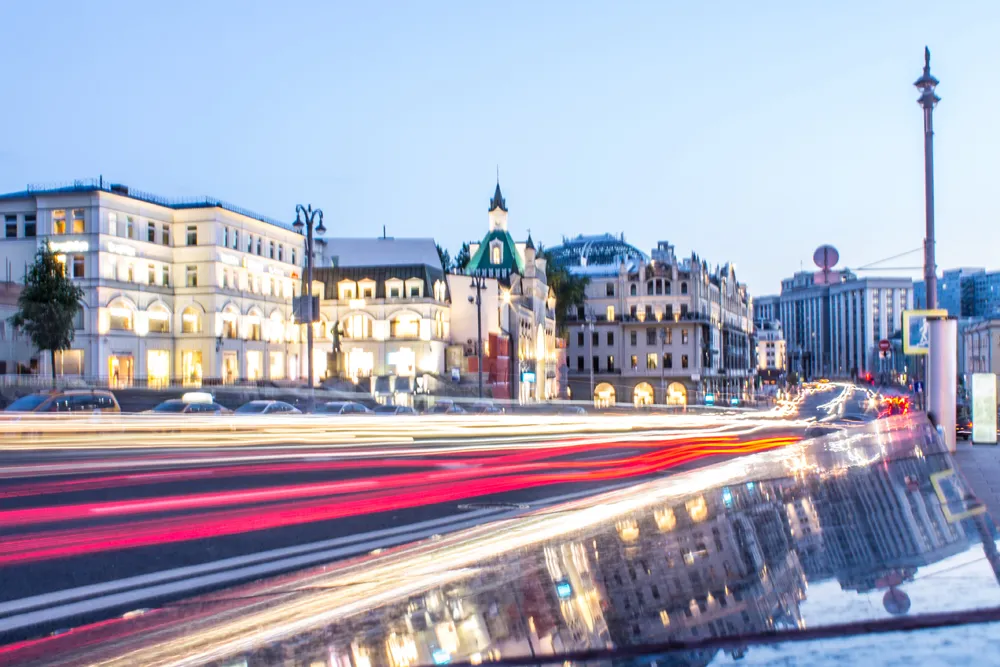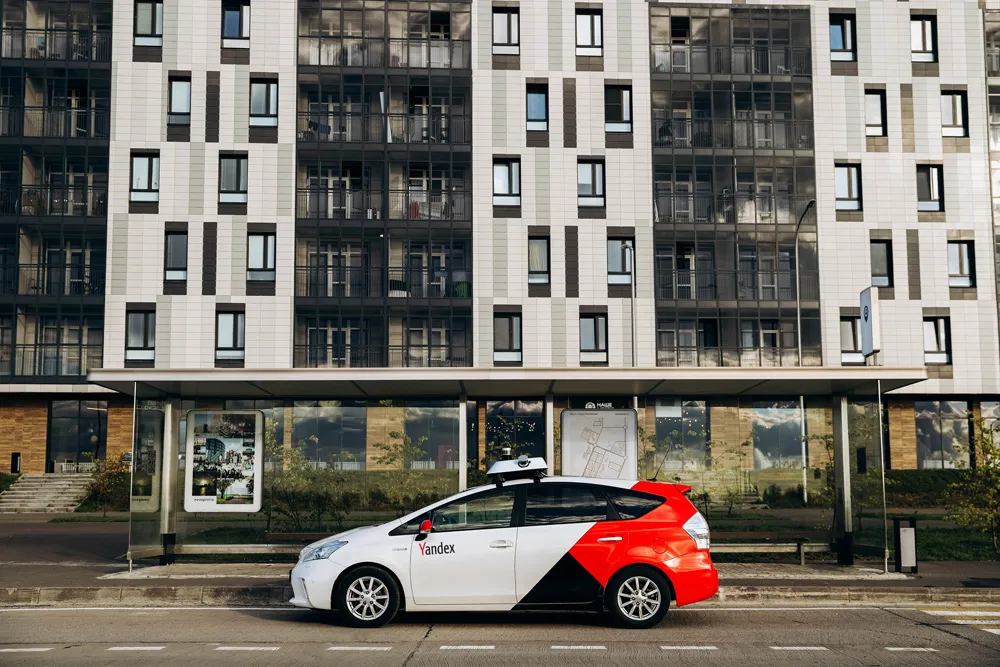
Major ITS installations are planned as the Russian capital Moscow grapples with extensive traffic problems.
At the end of 2014, Russia’s first complex intelligent transport system (ITS) started easing traffic problems in and around the capital Moscow, following the implementation of the plans by the federal government and the city’s authorities.
According to data of the Russian Ministry of Transport, the current system of traffic management sees nearly 26,000 people killed in Russia each year as a result of road accidents, with Moscow being a leader in these figures. In the first six months of 2014 there were 450 people killed in road accidents in and around Moscow. According to Moscow Authority for Road Traffic Safety, this is double the total for Norway or Ireland for the whole 2013. At the same time, the ever growing number of cars on the city’s roads and a poor traffic management system pose a threat of transport collapse in the next few years.
According to Alexander Komarov, a former head of the Moscow Center of Traffic Management, at present the number of cars registered in Moscow is estimated at about four million. It is predicted that this figure could grow to six million in the next few years which, if the existing traffic control systems remain in place, could result in gridlock.
In the face of such predictions and to head off the potential problems the city’s authorities will introduce a new complex ITS which, according to Moscow’s mayor Sergei Sobyanin, will enable the authorities to monitor and manage traffic flows in the city.
Sobyanin comments: “Key elements of the new system will be in place by the end of this year. The new system will regulate traffic in the city including schedule of public transport.”
The initiative for a transport system for Moscow and other large cities of Russia was put forward at the end of 2010, when the decree ‘On the creation of intelligent transport systems in Moscow’ was adopted by the Moscow Government. The new system had to be designed in accordance with Western standards and was completed by Sitronics, one of Russia’s largest microelectronics company based in Moscow and controlled by Sistema holding.
According to Alexander Evsin, from the Moscow Center of Traffic Management, the new system will reduce the volume of traffic congestion and optimise traffic flows in the city.
Evsin comments: “The new system is a hybrid of transport and information technologies with automatic monitoring tools, which are remotely managed by a group of specialists. It is not just equipment, but rather a certain set of algorithms. The new system also involves the use of geo-information technologies to create 3D models of the roads. So far, such models have already been designed for Russian federal highways including the M-1 [Moscow to Minsk], the M-10 [Moscow to Saint Petersburg] and part of The Baikal Highway.”
According to Maxim Liksutov, head of Moscow department of transport, the new system provides an opportunity to manage all types of public transport in the city, including metro, road and rail.
The new system involves installation of more than 7,000 sensors on roadside post and buildings throughout Moscow, which measure the intensity of road traffic, the average speed and the level of congestion.
In addition, more than 1,200 road safety cameras have been installed in the city centre along with about 200 variable message signs to display information for drivers about the level of congestion or road accidents on the route.
Finally, the new system involves installation of thousands of intelligent road signs to provide driver information about road section or pedestrian crossing ahead.
Liksutov comments: “The new system will allow the timing of traffic lights at all of Moscow’s intersections to be automatically adjusted according to the traffic flows. It can also be used to predict traffic situation in the city for the next 45 minutes. In addition, a so-called ‘green wave’ has been organised for the main inbound routes to the city in the morning and outbound during the evening peak-hours.”
The new bus priority system involves the installation of GLONASS navigation systems on 7,800 of Moscow’s public transport vehicles, and instrumenting traffic lights to allow drivers to overcome complex road sections with minimum time loss.
According to Igor Korolev, head of traffic in the Moscow City Government, the city plans to install a second system along the city’s most problematic roads and intersections. This will comprise more than 2,000 CCTV cameras and up to 10,000 transducers to determine traffic flows and adjust the timing of traffic lights.
Among the other measures designed to improve the city’s traffic situation is the minimising of temporary road closures in the rush hours and tolling some city centre roads in Moscow. There are also plans to restrict or prohibit trucks from entering the city’s busiest areas at certain times of the day. Finally, there are plans to refuse the establishment of further one-way streets (which have become very popular in recent years) to help to create more parking spaces in the city.
According to Moscow City Government, the adoption of the new system will allow to increase the average traffic speed in the city by 10-15%, compared to the current 19km/h. In addition, this will also allow reduce the time for a search of free parking spaces in the city by 65%, and the level of fuel consumption and emissions by 25%.
In general, the new system will allow to significantly reduce the level of congestion on the city’s roads and highways and to improve the current situation with parking in the city.
In addition, according to Vladimir Kryuchkov, chairman of
At the same time, some analysts believe that the installation of the new system may not solve Moscow’s serious traffic problems. According to Mikhail Blinkin, general director of the Institute of Transport Economics at leading university the Russian Higher School of Economics, this is mainly due to poor transport links between areas of the city and chaotic location of the existing traffic lights.
The new system has already been approved in the Russian government and in particular by the country’s prime minister Dmitry Medvedev, and the total volume of investments in the installation of the new system is estimated at RUB 17.5 billion (US$500 million).
If the systems in Moscow meets expectations the Russian government plans to test the new systems in other large cities and in particular St. Petersburg. There is also a possibility that further design and adoption of ITS in Moscow and other cities will be regulated by a special federal law ‘About ITS’, which is currently designed in the Russian Parliament (State Duma).
The adoption of ITS is part of an ambitious federal project called Innovative Roads which aims to bring about a significant improvement of the traffic situation across Russia and the technical condition of Russian roads to reduce the number of road accidents. As part of these plans, by 2017 durability of roads in the country should be increased by 3-5 times, the consumption of energy should be reduced by a similar magnitude.
Part of these plans is the digitisation of road signs and installation of intelligent sensors on cars. To reduce energy consumption the use of low energy lamps, and in particular LEDs, will be installed in traffic lights. In addition, the supply of energy to these traffic lights will take place with the use of renewables and in particular solar energy, instead of traditional energy sources.
Once these plans have been enacted traffic should flow more smoothly and reliably, and both accidents and emissions should be much lower than is currently the case.










